I’ve been involved with Morris Minors all my life. In 1960, my dad bought a brand-new Minor 1000 Traveller (woody wagon) in London and we brought it to the States. I still own that car, which has its original ash timber frame, plus a few other Minors as well. In high school, knowing no one else who owned a Minor, I helped start the Morris Minor Registry club in the U.S.
If a car has been part of your whole life, what happens when you wake up to find that you’ve become one of ‘those old people with the weird old cars?’ What if the newest version of a car that launched before you were born is now more than half a century old?

I went to the UK this summer to ask those questions to fans of the Minor, among the most iconic of British cars. Over three days of the sprawling Morris Minor Owners Club (MMOC) meet to mark the 75th anniversary of the car’s launch, I spoke with dozens of people. In particular, I focused on the innovative and much-imitated MMOC Young Members group, which brought an entirely new generation of regular drivers to these decades-old cars. My goal was to find out where the Minor goes from here – and what lessons enthusiasts can still learn from it.
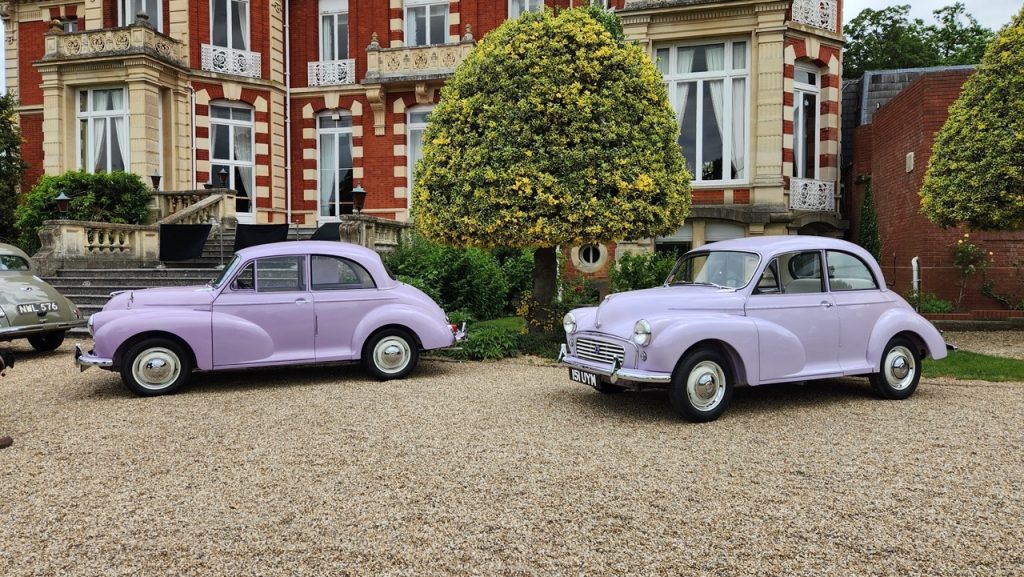
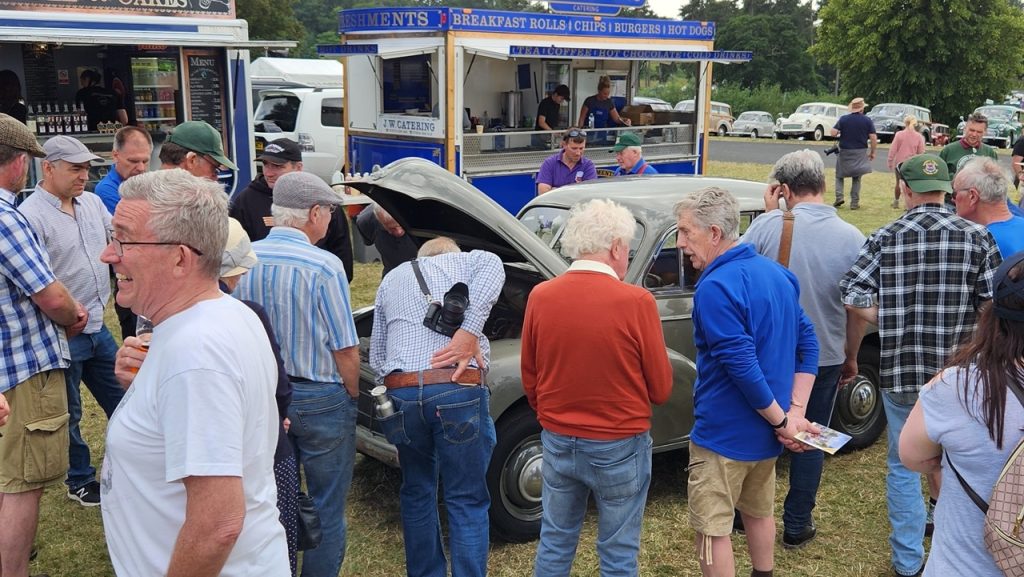
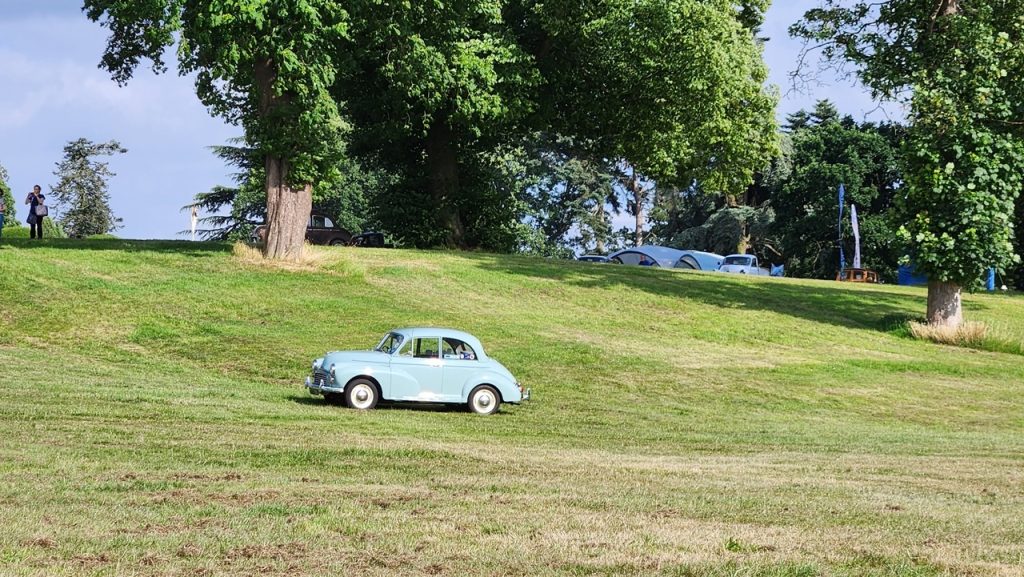
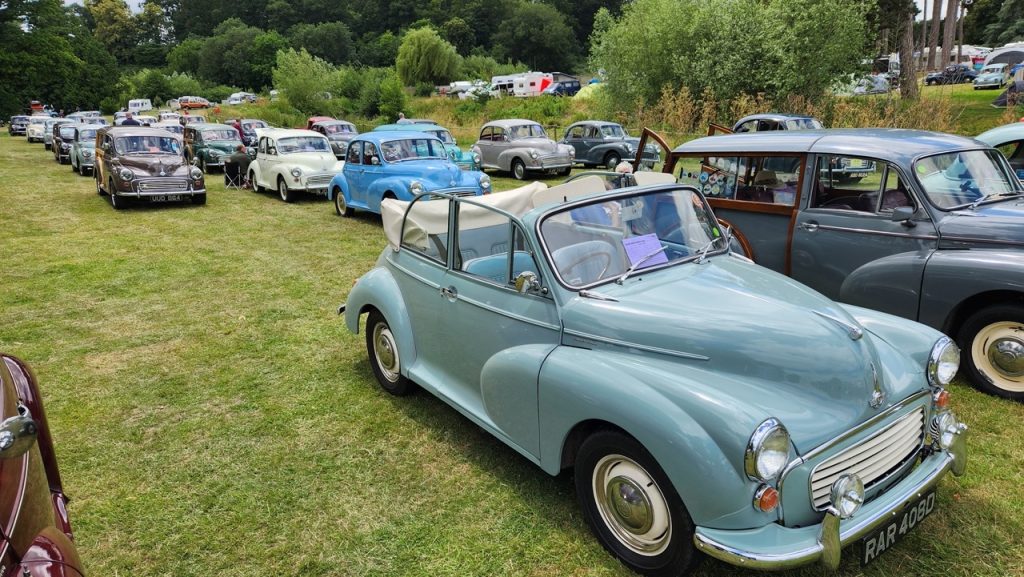
Postwar star
The year 1948 saw the launch of two classic British cars: the Jaguar XK 120 and the Morris Minor. They were the stars of the first national Motor Show held since the end of the war.
Britons crowded the stands at Earls Court in London, marveling at the sleek two-seat Jaguar – named for its 120mph top speed – but imagining themselves driving a shiny new Minor. The postwar Morris was largely created by one man – engineer Alec Issigonis, who later designed the revolutionary BMC Mini. Sketched during his wartime stints of fire-watching, the Minor took shape as early as 1941. Issigonis admitted decades later he had been influenced by American designs – very possibly including the seminal Buick Y-Job of 1938, the first American concept car. His Minor wasn’t fast, but the handling delivered by its rack-and-pinion steering and torsion-bar suspension set it far above the ponderous Austins, Fords, Hillmans, and Vauxhalls of the day. It sold well into the early 1960s.
And yet, the Minor already looked old-fashioned by 1960 – especially with the launch of the Mini the year before. Minor sales dwindled throughout the following decade, with the convertible ending its run in 1969, the sedans in late 1970, and the final Traveller woody wagon (at 215,000 produced over 18 years, the highest-production woody ever) in April 1971. Minor vans and pickups continued a few months beyond that.
The Morris name itself saw just one more dedicated model, the ill-fated Marina, sold as an Austin in North America. That was restyled into the Morris Ital, but it was the last Morris car. The brand died entirely in the late 1980s; SAIC of China now owns the Morris name.
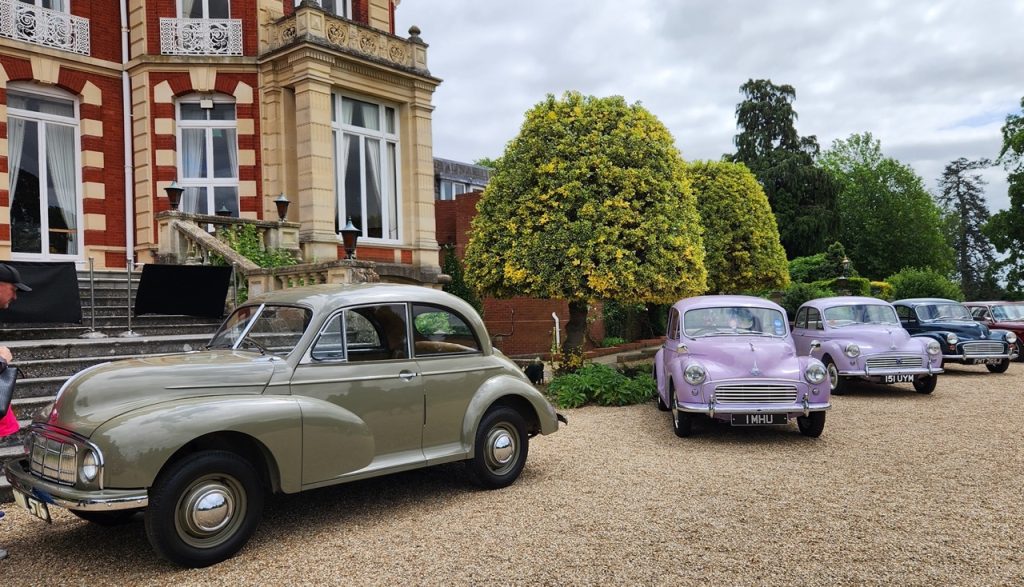
The Minor’s friendly, rounded lines are indelibly etched into two or three generations of British culture. These days, it’s the car your granddad learned to drive in, or perhaps what your 1980s mum drove you to school in. In 1949, a shiny new two-door Minor saloon or Tourer (with rear side screens, no less) was an aspirational car for a growing British middle class. At its end, 23 years later, the Minor was a stodgy model driven by rural people, old folks, and the County Nurse making her rounds. Hundreds of thousands of Minor vans and pickups also did yeoman service for the telephone company, the Royal Mail, small businesses, and more.
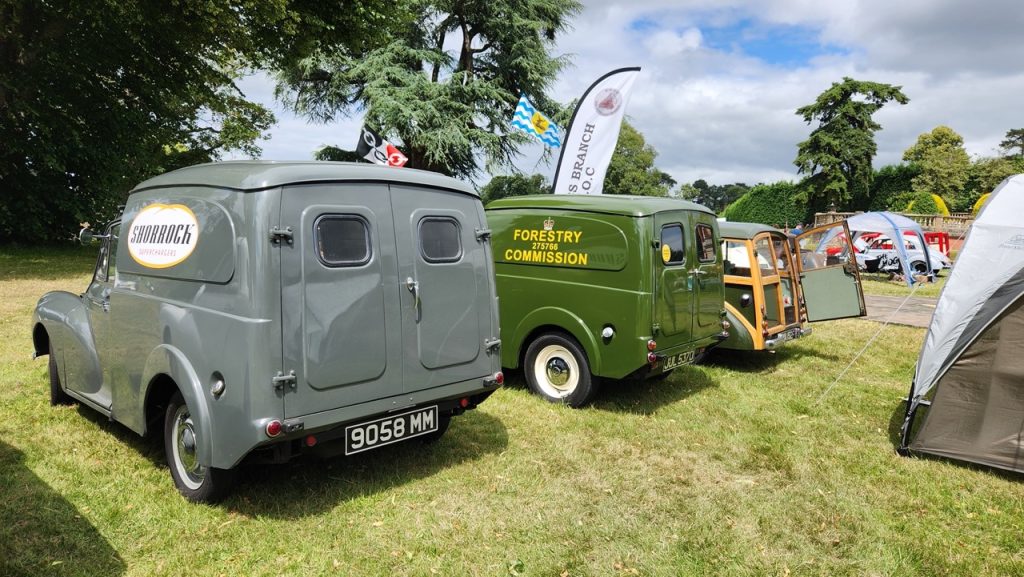
Today, a Minor is among the cheapest cars a young Briton can drive. Despite its age, parts availability is superb, repairs are simple, it’s surprisingly reliable, and, crucially for younger drivers, it’s cheap to insure. Many MMOC Young Members under 40 (they started under 30, but, well, people age) still run them daily. And it’s been voted “Britain’s Most Popular Classic Car” more times than you can count.
So … what now?
The stately Chateau Impney, the site of this year’s MMOC meeting, offered a properly evocative photo setting for the event. It’s an ornate Victorian pile in the style of a French chateau, set amidst green lawns and rolling fields usually occupied by sheep. On the first weekend of July, hundreds of Minor owners arrived, many towing trailers of all sizes. Minor owners tend not to be the Goodwood Revival crowd in Bentleys or Aston Martins, so tent camping and caravans are a thrifty way to do events.
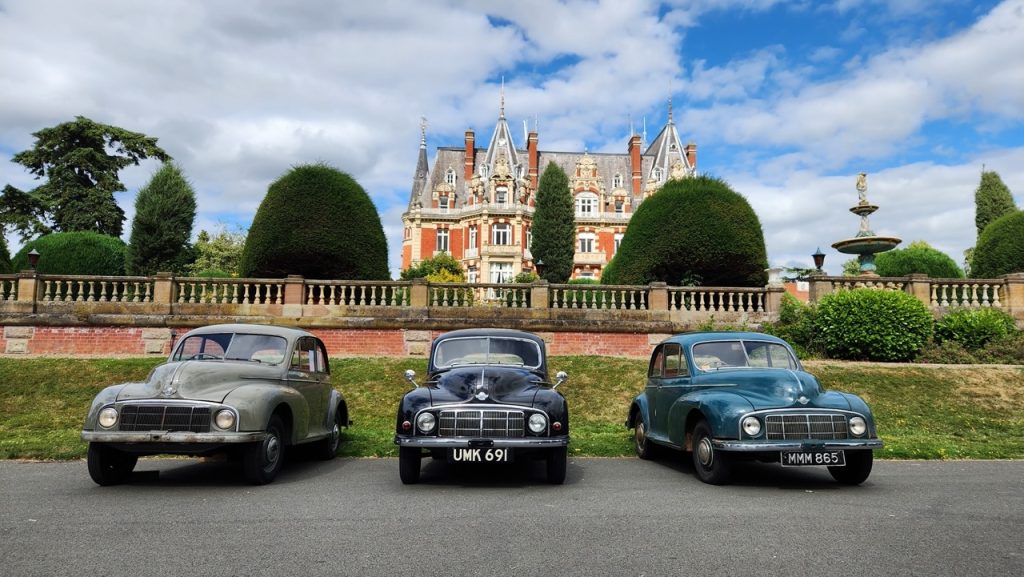
Club officials and media reports claimed 750 Minors in attendance, an impressive number but half as many as attended the 50th anniversary bash in 1998. Unsurprisingly, the majority of attendees (myself included) had white or silver hair, and I worried the event might come to feel like a last hurrah.
Thankfully, the pioneering MMOC Young Members chapter was very much in attendance. All acknowledged it’s unclear how long a Minor – a 12-foot, 1700-pound car of 28 to 45 brake horsepower – can continue to be practical for daily use, but that didn’t seem to quell their passion for the vehicles.
One key to the future, suggested Practical Classics magazine projects manager Matt Tomkins, age 30, is to get families involved – and underscore the idea that a classic car can be part of people’s everyday lives. His dad had an MG Midget in the 1990s, so the idea a decades-old car could be used regularly wasn’t foreign to him when Tomkins bought his first Minor at 17.
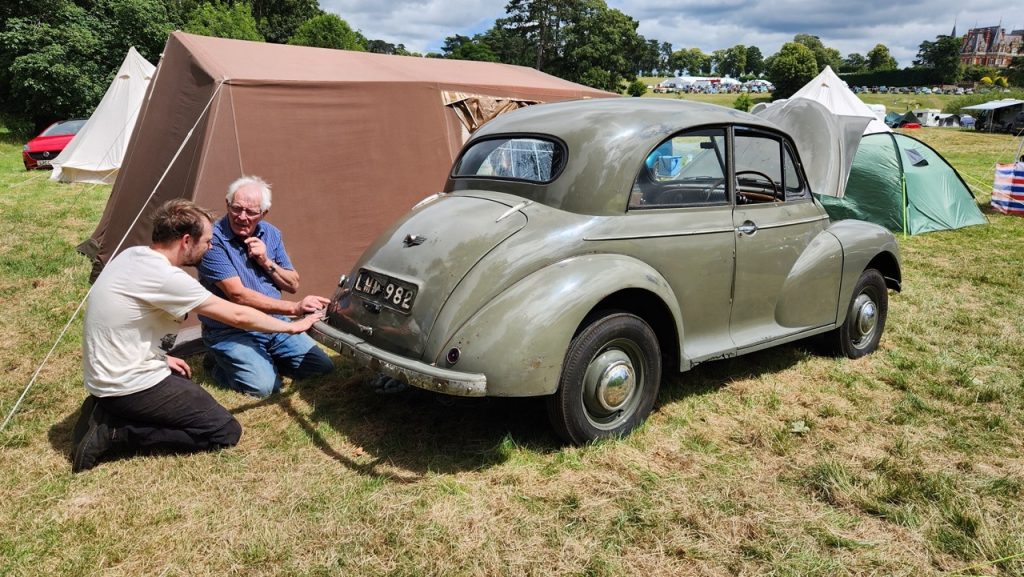
Reaching new audiences where they are is crucial. Young Member Steph Holloway, better known as Steph from I Drive a Classic on YouTube, brings to her 47,000-strong audience the idea that old cars are to be used. She drives a variety of classic cars, including a Minor named Nancy, with the attitude that old cars are accessible, interesting, and fun – even when they break down. The comments sections of her videos are full of people who agree. “Nancy was my first classic,” Holloway told me with a smile. Looking over the car, freshly restored and just back from a weeklong, 1800-mile journey on which Nancy performed flawlessly, she added: “I’m delighted she’s finally been put to rights.”
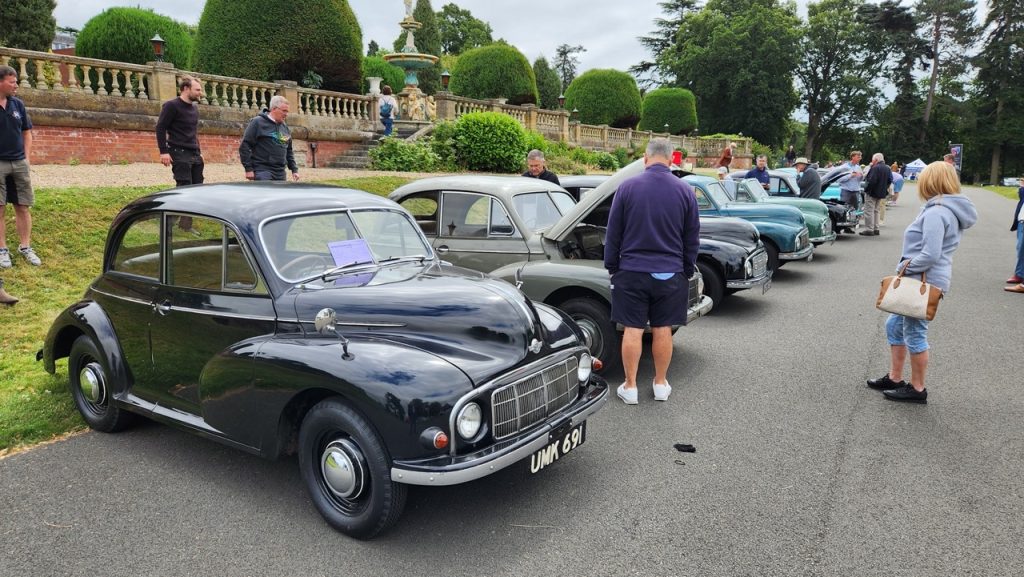
Also an MMOC Young Member, Becca Treston records the weekly Passenger Seat podcast from inside Peggy, her 1968 Morris Minor. Recent episodes covered her trip to the Netherlands in the 55-year-old car, as well as interviews from the 75th anniversary event with MMOC Young Members about why they own Minors. “There are still 15,000 Minors in the UK,” she said. “So even if that number halves in the next 25 years,” she added, the cars will remain practical. A researcher by trade, Treston recently analyzed the costs of buying and running a Minor in the 1980s vs. today. Accounting for inflation, it takes a larger proportion of a young person’s income today than it did then. Perhaps, she suggested, a rehoming or adoption system is needed for older owners to pass their Minors on to younger drivers who will use them.
Back on the field, Colin Frost, 45, stressed the need to bring entire families into the old-car fold. “It can’t just be something dad does with his friends,” he said. Frost regularly joins other MMOC members for the annual Minors on Tour (MoT) event, in which several dozen drivers (including the above Holloway) gather at a port, drive their Minors onto a ferry, cross the English Channel, and tour through France, Belgium, or Italy. This year’s event covered 1800 miles in a week, including one grueling 615-mile day.
“The key to this car is to make memories,” Frost said. “And carry on making memories for new people.” Sure, people of Frost’s age “think we’re absolutely crazy” to drive a 60-year-old car regularly – but “there’s also a kind of secret admiration.” His 16-year-old son Harry came on the MoT journey this year. Frost said Harry feels the old-car hobby has zero street cred, but Harry’s girlfriend “thought it was the coolest thing ever. He was embarrassed, and she gave him a right ticking-off.”
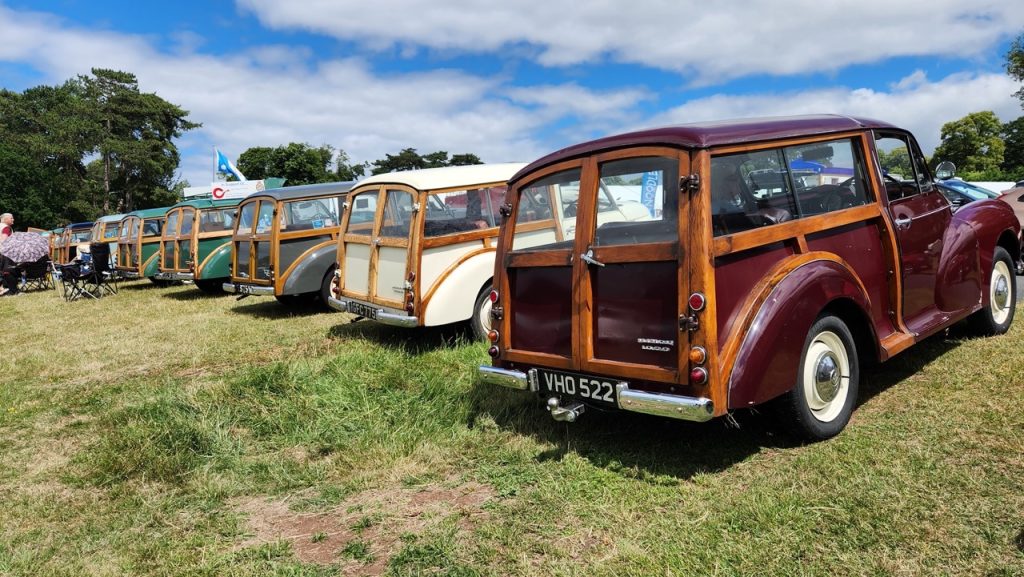
As beloved as it is in popular culture, the Morris Minor is now purely a part of Britain’s past. But it has a tenacious hold on the best of memories from bygone ages. An unnamed Minor lover within in a large group may have summed it up perfectly: “Perhaps it’s best there aren’t any more Morrises. We wouldn’t like the new ones, would we?”
The ones that do exist – possibly as many as 50,000 globally out of 1.6 million built – remain among the easiest old cars to use. And Tomkins of Practical Classics was at his most passionate as he offered advice that applies not just to Minors, but to any old cars: “Take your car out, don’t squirrel it away in the garage and just use it once a year. Take it on the school run, take it to the supermarket – and when you see people, wave, smile, and toot. If one percent of the people you engage with take up the baton, or at least have an understanding of why there’s an enthusiasm for preserving this heritage, then we’ve got a future.
“If we lock them away,” he said, “and we don’t allow the next generation to see classic cars and engage with them, we don’t stand a chance.”
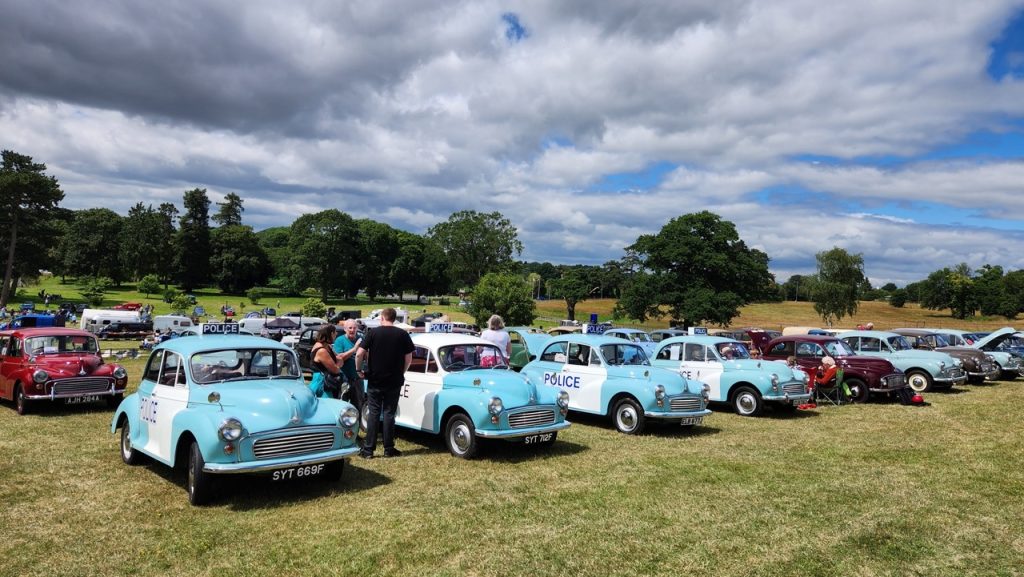










What a marvellous article! I did enjoy it.
My husband bought a 1955 Morris Convertible in January 1961 and it’s still here. His 1966 Traveller, bought in 1969, had to be sold when he died in 2021, but it is sad without it.
There is a special atmosphere with Morrises, as far as I know unique to them. They are wonderful and give so much pleasure.
Great article
I would dearly love a morris minor van. But the problem now is I am 76 years old and I’m afraid …passed it. What a shame.
Liam
An iconic beauty, is the Morris Minor. We had many of these beauties in India, sadly very few left today.
I enjoyed this article (and the links) immensely being a Nuffield fan for many years.
I had the pleasure of driving a Morris Minor from Bolton to Bristol to the Charles Ware Minor centre. It’s a journey I’ll never forget so nostalgicand lots of people came over to chat and take photos on the services.
I have a 1967 cream Morris Traveller called Emily. It was my Dad’s, she has been in the family since 1977, my Mum learnt to drive in her, she was stolen from a car park in Littlehampton and found at Victoria Station, lots of memoirs of chugging up big hills on family holidays. My Dad moved and finds her uncomfortable to drive now and gave me the car to look after. I love pootling about and waving at other classic car owners.
Liam you are not passed it .. I am 77 and still regularly drive my 1927 Morris Cowley tourer , 53 MGTD and of course the obligatory MGBGT ( the winter car, it has a roof.) the two early cars regularly on extended tours in France You are only as old as the the road you take .
I’ve just purchased a 1953 minor (with modern upgrades) to use as my everyday transport, after getting fed up with modern car reliability due to unnecessary complexity. It’s my 5th morris minor & I’ve enjoyed every one of them.
I haven’t always driven old cars, they have just aged with me. That said, I was always interested in old cars and when I used to be taken to VSCC events, fifty years ago, lots of the cars there were only then as old as my cars are today. My youngest car, a 1979 MG Midget, is the one I have owned longest (Since June 1984). I had just one brand new car but even that was an oldish design, when I bought it – a 1987 Mini. I had a VW Golf GTI, that was perhaps the best all round car I ever owned; not the fastest but it would carry four people at 120mph and could return very high mpg. Whilst more complex than the other cars, it was still quite easy to work on, though I am sure current models are not.
I have driven new hire cars and I can’t say I enjoyed them. One of them, despite being quite new, seemed to suffer from a number of electrical faults, like self starting when I was not even sat at the wheel or indicators that wouldn’t stop flashing when required (After that, I tried not to indicate, unless I really needed to). I find them feelingless and I don’t want a car that has to be connected to a computer, when it needs service. I once woke up from a nightmare, that had seen me suddenly presented with a finance agreement, to buy a new Audi. I didn’t know how I had come this close to making such a rash move and to stall for time, said “I will have to read this thoroughly, before I can sign it”, before I woke up with sweat on my brow.
As such, I have carried on driving the sorts of cars with which I grew up (If I had more room, I’d like an MG M Type Midget or perhaps a J2/P Type/TA or even a Series 1 Morgan 4/4) and sometimes forget that my cars stand out. This is covered at https://www.morrisminorowners.co.uk/viewtopic.php?t=13915 .
I only been a Minor owner for just over twenty years and have often pondered how this might have been longer but for a number of missed opportunities. With this in mind, now that I am the longest owner of my Morris Minor Traveller, I sent an item to the MMOC some time ago and this is reproduced at https://board.mmoc.org.uk/viewtopic.php?t=77316 .